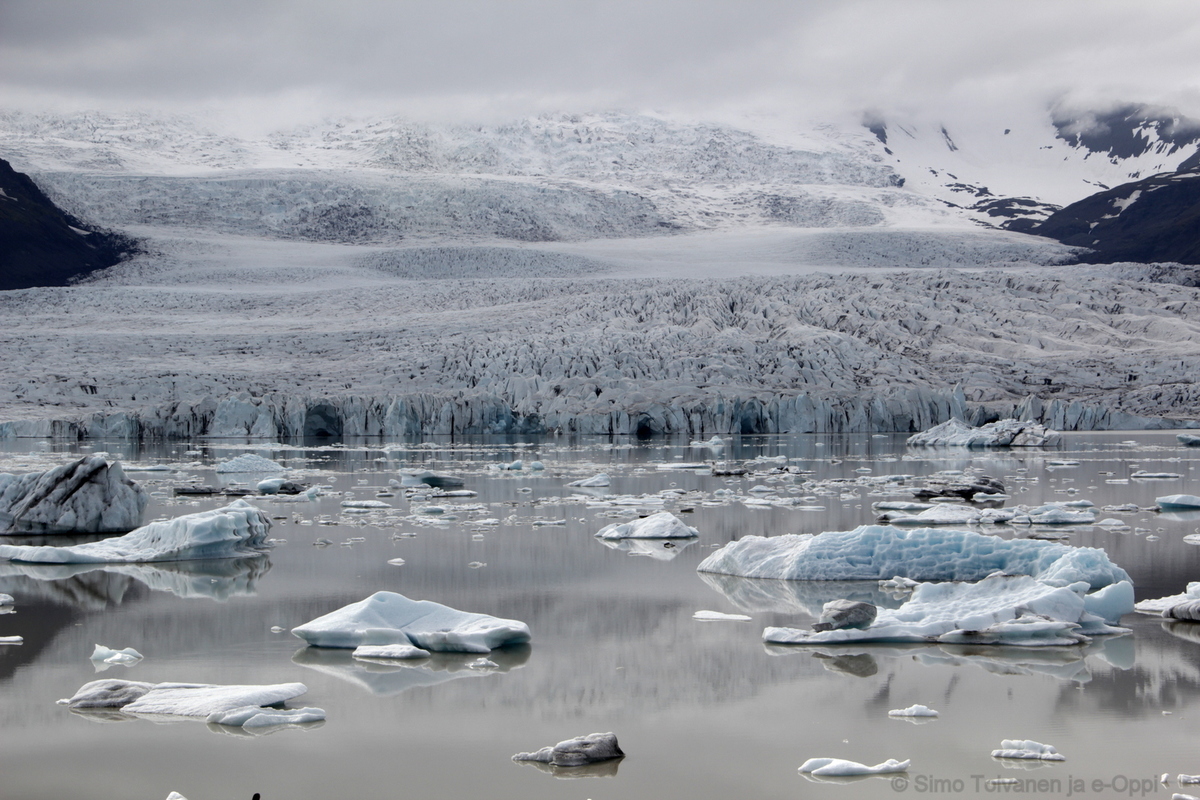3.1 We live in an ice age
For some, the term ice age might bring to mind only a series of animated movies where a squirrel desperately tries to crack a nut. However, everything that is not built by humans has been affected by the last ice age and the events that followed it.
In the Northern Hemisphere the ice age – or, to be precise, multiple ice ages – have molded the landscape and affected the people, plants and animals that lived there during that time. Even after the ice age, we still make use of the geographical features that have been created by it. For example, we cultivate plants in clay fields and filter groundwater from eskers.
Many ice age periods are known to have taken place during the planet's history. The latest of these ice ages began approximately 2,5 million years ago. Because ice ages destroy most of the signs left by the previous ice ages, it is difficult to study older ice ages. In Finland, we can still find signs from at least five different ice ages. However, the majority of the geographic features found in Finnish landscapes are specifically the result of the last ice age.

Glaciers can still be found in Iceland.